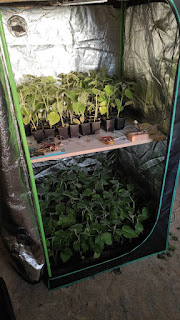Last week Martijn Ballemans, his wife Zoë and their children visited us in Bárcena. They are traveling with their camper to get inspiration for where they want to live. They were in the neighborhood and stayed one night in Bárcena. Our first visitors stayed the night! It was very nice to meet them there and to hear what they think about the place. To discuss things about the future food forest.
We celebrated Trisa’s birthday, Martijn helped with setting up the electricity and Zoë made a soup from the nettles in the villages. The first meal made from Bárcena products! And it tasted very good. Now that Martijn visited Bárcena, it is really time we write about the food forest design.
In October 2023 Maaike started a course “Design course for food forest and edible garden” with Martijn Ballemans from PuurPermacultuur. It was a 7 day course where we would learn how to design a food forest. About the first half of the course consisted mainly of learning about what a food forest is and getting inspiration from other food forests like the one where we had the course. In the second half of the course we put everything we learned in practice: everybody was making their own design.
First we had to decide what the ratio would be, for the drawing. For a garden this should be 1:200 or 1:100, for a food forest 1:500 or 1:1000. I started calculating and decided that 1:1000 would be the best for such a large project. For 1:500 we would need A0, for 1:1000 it was A2. Then I calculated based on an A4 print of our land how the land should be plotted on A2, which was a very nice exercise. During the exercise I learned that I needed reading glasses, which I bought.
Starting with the base model I used a print from the catastro to calculate where our land is on A2. This took quite some time, but it was useful, because we can use this base design every time we try a different idea.
And then… I had no idea where to start, but never the less I just started with what I knew.
First I drew the ponds that Jonas drew in his advice report. Then after some discussion with Tibor, we decided to make a wide path on the big pieces of land and start the design there. But still where to start?
First I made a list of trees we wanted based on Jonas' advice and based on the typical food forest trees we heard about in the course and read about in Martin Crawford’s food forest manual. We decided that the production forest will be on the big lands in the south. The other, smaller, lands will be used for experimenting with food forest trees and plants, for a vegetable garden, for experimenting with species for insulation material like hemp. And some wood production with the fast growing Paulownia trees.
To make things easier I started drawing the biggest trees (about 15m wide), mainly walnut and chestnut and some nitrogen binders. Then the next layer (8-10m wide): apples, pears and cherries in general. We haven't decided what type of apples and pears, but there will be different types. Then the third layer (around 5m wide): almond, hazel, pomegranate, strawberry tree, plums, peach, abricot and also some nitrogen fixers.
Of course there will be more layers, with climbing plants, smaller fruits like raspberries and other types of berries and ground covers. And also we still have a lot to figure out, for example which trees and plants will we put in the shadow parts, for example kaki.
In the experimental part there will at least be what we call an “unionsoup tree”, because the leaves taste like unionsoup, and I really like it. Although I did not have an idea how to make a design, by doing I created one which is a good starting point.
In the last class everybody presented their design in small groups, and got feedback. The feedback we got was that the same trees were too separate to make yielding easy. Tibor and I are still in discussion about if that is true or not about the big nut trees. About the apples and pears we agreed. I thought it was better not to put them close to each other to prevent the spread of diseases. But for this purpose, to put 5 apple trees next to each other is still ok (we will only lose 5 if one of them gets sick).
Because we would like to have building wood as soon as possible we ordered the Paulownias as soon as possible. And the they arrived on time.
Unfortunately, they were frozen a few days ago, since the night temperature is very cold at the moment and they also were too wet and there was some mold.
Once more we are lucky with our neighbor Carlos, who is taking good care of them now. In the picuture you can see his tree nursery. While we are back in Holland he will take care of them and hopefully we can plant them this summer.




Comments
Post a Comment